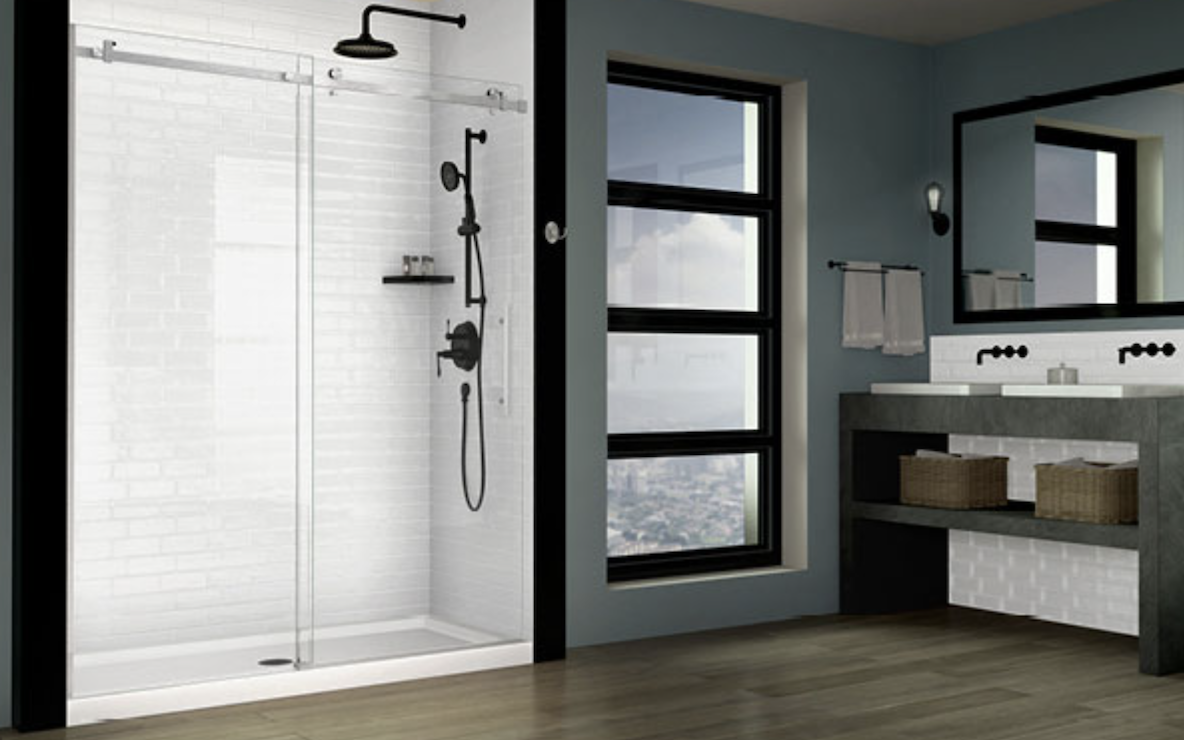5 Ways to Renovate for Home Accessibility

Written by Jody Fisk
Home Accessibility Stats
Why do people renovate for home accessibility? As mobility changes, homes need to be modified to accommodate changing needs. According to The National Library of Medicine, there are 2.7 million wheelchair users in the United States. Mobility — the ability to move or walk freely and easily — is critical for functioning well and living independently for everyone. Additionally, as we age, we may also experience changes to our mobility. There are many reasons for these changes, including changes in gait (how we walk), balance, and physical strength. Therefore the need for accessible housing is often understated and overlooked until a need arises.
Unfortunately, not all homes are built to accommodate handicap accessibility. The good news is there are many ways you can renovate your home to create a more accessible space. By establishing a budget, renovating the structure of your home, improving tight spaces, purchasing new appliances, and hiring professional help if needed, your home will be more efficient for handicap accessibility.
Whether you or a loved one are currently in a wheelchair, you’re trying to get ahead of old age, or you’d like to make your home a more welcoming space for handicapped guests, below are five ways to help you get started.
Whatever your budget, situation, or level of construction expertise is, there are many ways to create a more accessible space. By starting with the most important projects first and working your way down the list, your home’s mobility will improve in no time. Remember, not everything needs to be updated right away. Don’t forget to reference the helpful tips above to help renovate your home for increased accessibility. Each step is an investment in creating a home that you can live in for your lifetime.
Establish a Budget
Before diving into the renovations, start by establishing a realistic budget. The cost of home renovations can add up fast, so by adding a little extra wiggle room in your budget, you’ll be able to make bigger renovation projects for a more wheelchair-friendly space. To help afford these projects, look into utilizing your home’s equity. Tapping into funds through the equity in your home will allow you to allocate money for the cost of each expense upfront. Another way to help pay for the renovations is by dipping into your retirement accounts (if you’re retired already). If you’re not retired yet, set money aside from each paycheck to put towards the expenses. Remember, you don’t have to tackle every project right away. Start with the most important first and work your way down the list.
Renovate the Structure
There are many ways to update the structure of your home to accommodate wheelchairs. Among the most popular is building a wheelchair-accessible entranceway. This can be done by installing a wheelchair-accessible ramp. Doorway ramps are crucial, especially if your entranceway has steps to get to the front door. Then, make sure a wheelchair can fit through the doorway by accurately adjusting doorway measurements. To reduce strain on the wheelchair user’s shoulders, the threshold should be lower than half an inch with a 36-inch wide door frame. Another major structure update is expanding the garage so a wheelchair-accessible van can fit into the space. This would be beneficial to avoid rain or snow when exiting the vehicle.
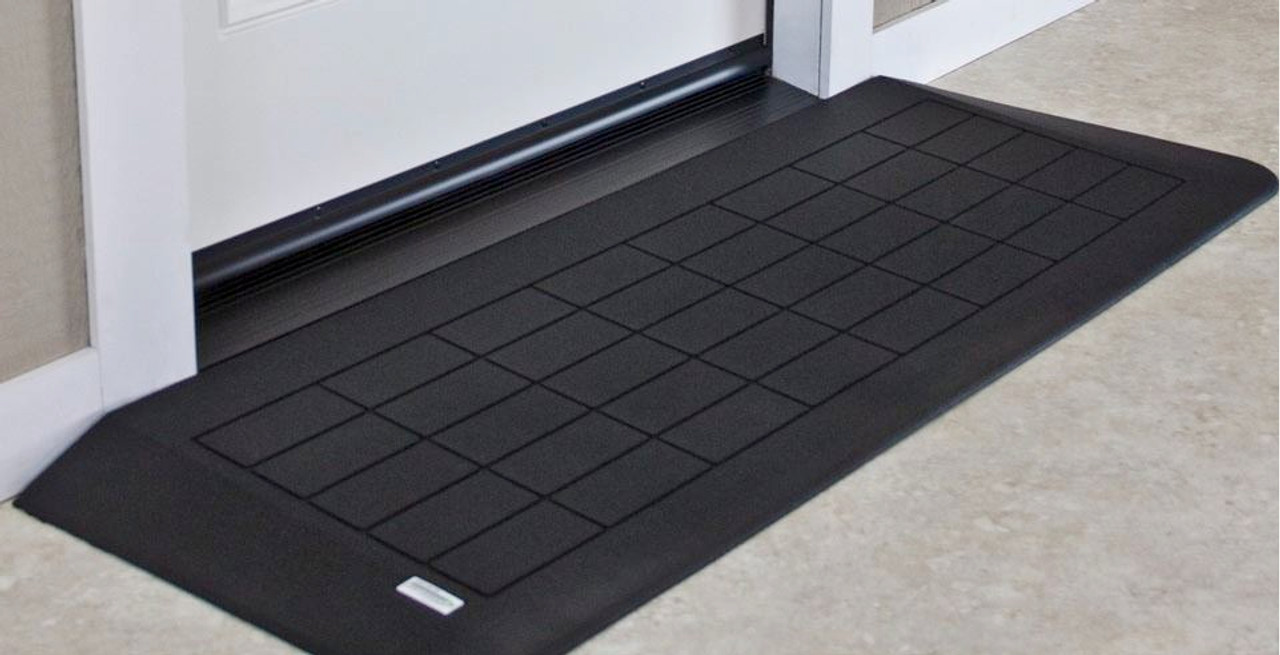
Improve Tight Spaces
Maneuvering through your home can be tricky in a wheelchair with tight spaces. Start by eliminating any unnecessary clutter or furniture that might get in the way. Replace all the doors and install wheelchair-accessible door frames. If possible, try to make sure each room has a 5-foot radius of turning space. If the bedrooms are small and you have the space, knock down a wall to create a larger room. For a more wheelchair-accessible space, lower the countertops in the kitchen and bathroom along with the cabinets so they’re not too high up. This will allow you to utilize the kitchen without added complications.
Purchase New Appliances
Don’t forget about purchasing wheelchair-friendly appliances for your home. Start with one room at a time. For the bathroom, purchase a wheelchair-accessible shower, sink, and toilet, along with helpful accessories like a handlebar to assist in getting up and down. Make sure the toilet is lower so that it’s easier to maneuver to and from the wheelchair. For the kitchen, look into purchasing a side-by-side fridge to avoid the freezer being up top. This will make it possible to get into both the fridge and freezer, especially for shorter wheelchair users. For more accessibility, buy a stove with the knobs in the front rather than the back. If you don’t want to purchase a whole new kitchen sink, replace your current faucet with a longer one. Don’t forget about the smaller appliances, like under-cabinet jar openers, and automatic soap dispensers. Smaller updates will be a quick and easy way to achieve more mobility in your home.
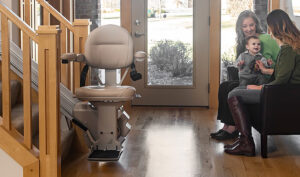
Another type of “appliance” you may want to consider is a stairlift. Often, people choose a stairlift when they begin to have issues climbing stairs.
Hire Professional Help
If you’re currently in a wheelchair or you don’t have a wide background in construction to make the renovations yourself, try finding a local contractor that specializes in accessibility to help. It isn’t uncommon for EZ Able® to visit homes and find unsafe ramps which are too steep for safe access. Often these ramps are missing handrails and built with a plywood surface that will become extremely slippery with a thin layer of frost or mold. The cheapest bid isn’t always the way to go when it comes to accessibility. A modification or device doesn’t do you any good if it doesn’t work for your specific needs and if it could be the source for further injury. Don’t be afraid to ask for as much help as possible to get the job done.
Whatever your budget, situation, or level of construction expertise is, there are many ways to create a more accessible space. By starting with the most important projects first and working your way down the list, your home’s mobility will improve in no time. Remember, not everything needs to be updated right away. Don’t forget to reference the helpful tips above to help renovate your home for increased accessibility. Each step is an investment in creating a home that you can live in for your lifetime.
Helpful hintConvert a 5 foot bathtub into a shower.
EZAble.com offers a wide array of shower options: curbed, curbless, tile, ready-to-use, solid surface, and MORE!
Need help? Fill out the form below and one of our specialists will assist you.
Tile Shower Systems
Curbed and Curbless Options
Quick Drain USA now offers a more AFFORDABLE linear shower drain, the SHOWERLINE drain for residential construction for both Curbless & Curbless Showers.

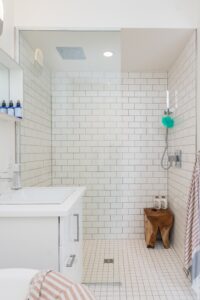
Ready To Use
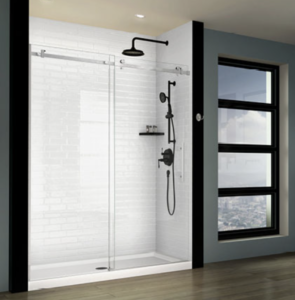
Showers & Shower Bases Options
Since
Happy Customers
CALL 24/7 - 365 Days a Year
Straight Stairlifts
CLICK to view prices. EZ Able® offers many affordable choices for your needs. Call 877-392-2531 for details. Need help finding the right lift? EZ Able® offers many affordable, safe and reliable choices for your needs. All of our lifts meet tough safety standards.
Curves or Radius Stairways
CLICK TO VIEW Curved Stairlifts for Home or Business
Not all stairways are straight runs. A curved stairlift accommodates stairways were there are turns.
Straight Stairlifts
CLICK to view prices. EZ Able® offers many affordable choices for your needs. Call 877-392-2531 for details. Need help finding the right lift? EZ Able® offers many affordable, safe and reliable choices for your needs. All of our lifts meet tough safety standards.
Curves or Radius Stairways
CLICK TO VIEW Curved Stairlifts for Home or Business
Not all stairways are straight runs. A curved stairlift accommodates stairways were there are turns.

